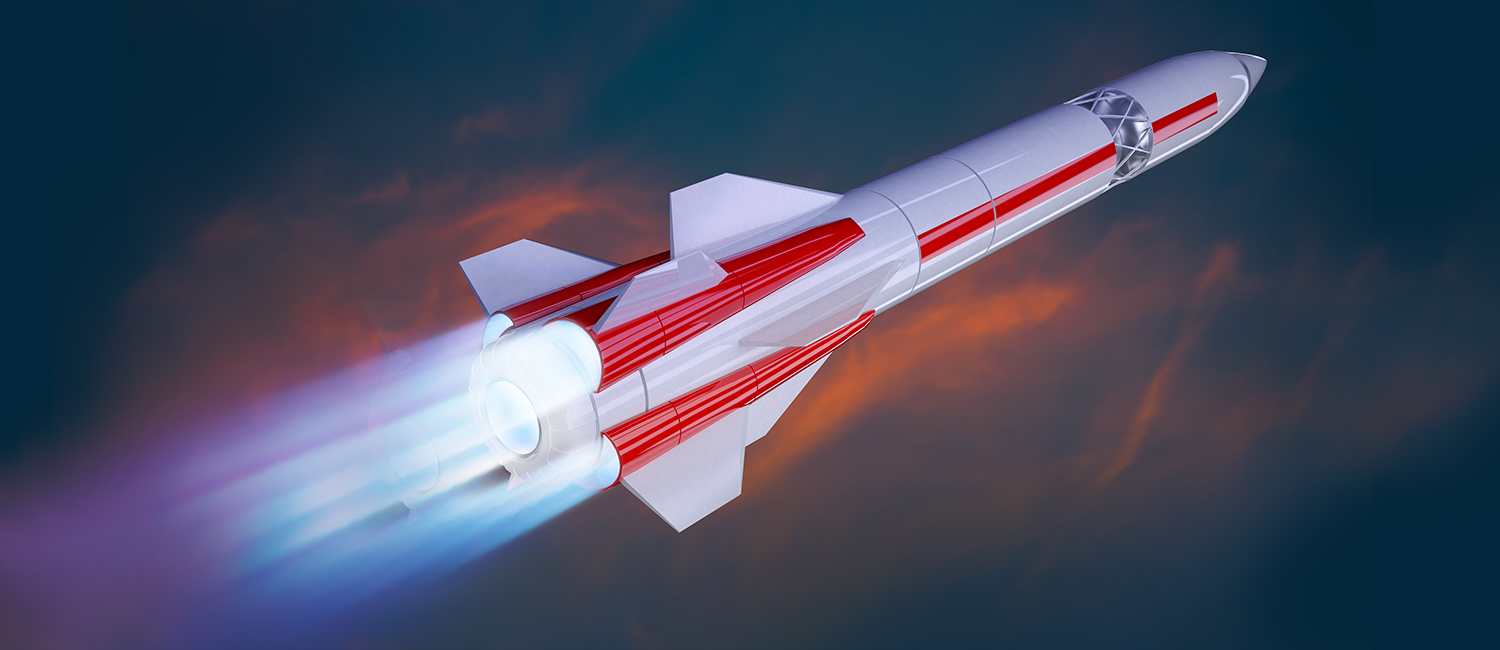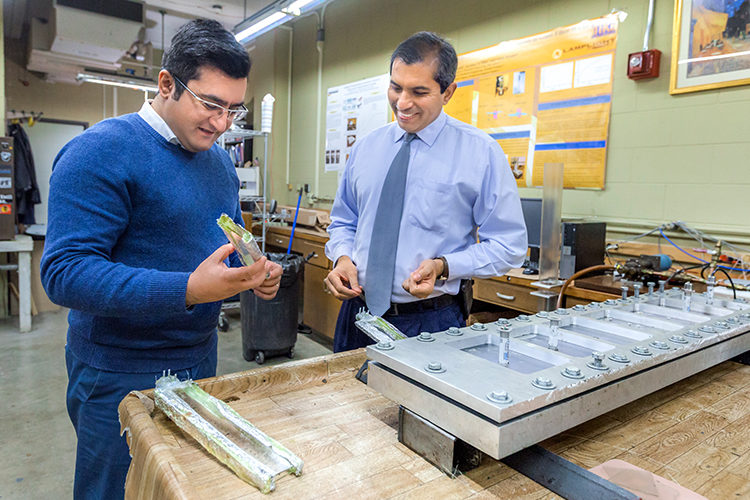
Safer fueling for rocket launches
Launching rockets into space is dangerous business. Past launches have been plagued by fiery explosions that happen for numerous reasons, including combustion problems.
To minimize the chance of such disasters, fuel has to be delivered to a rocket’s engine in a controlled manner, especially as the rocket moves away from Earth’s gravity. As a UWM mechanical engineering doctoral student, Amin Zarandi explored a method to improve the stability of the combustion process. He worked under the guidance of Krishna Pillai, a professor of mechanical engineering in the College of Engineering & Applied Science.
A rocket’s fuel tanks are designed with special channels filled with porous material. This provides a path for fuel to flow from the fuel tank to the combustion chamber through a process called wicking. It happens similarly to how a liquid is absorbed by and moves through facial tissue or a diaper.
“It’s the way the wicking unfolds that’s really important,” Zarandi says.
In Pillai’s lab, Zarandi identified two different wicking patterns. In one pattern, the porous material is partially saturated. In the other, the material is fully saturated. Only the latter pattern, Zarandi explains, results in the steady delivery of rocket fuel under any conditions.
It’s the microstructure of the wicking material, Zarandi says, that affects the fuel’s saturation pattern. His research could enable engineers to fine-tune the porous material to improve the fuel-burning process. That, in turn, would lead to more stable combustion and safer rocket launches.
